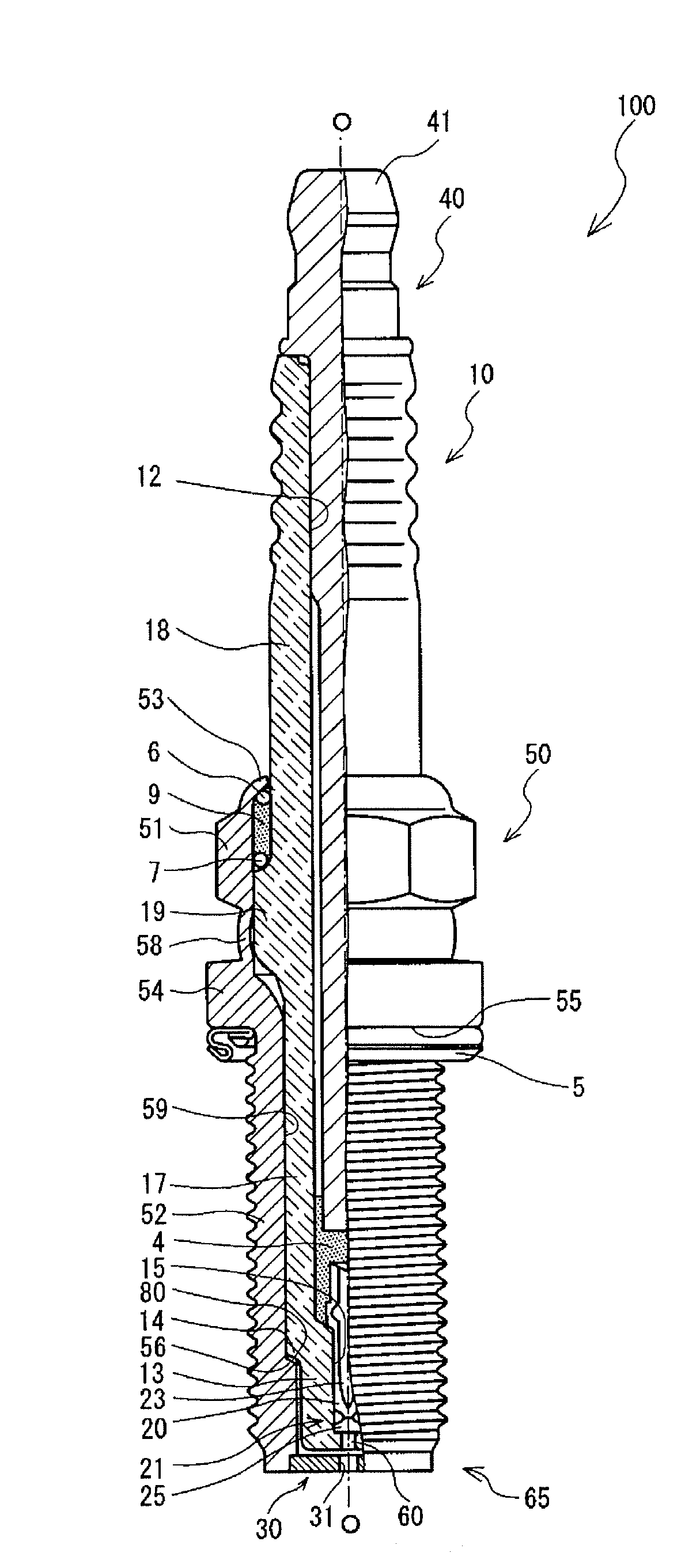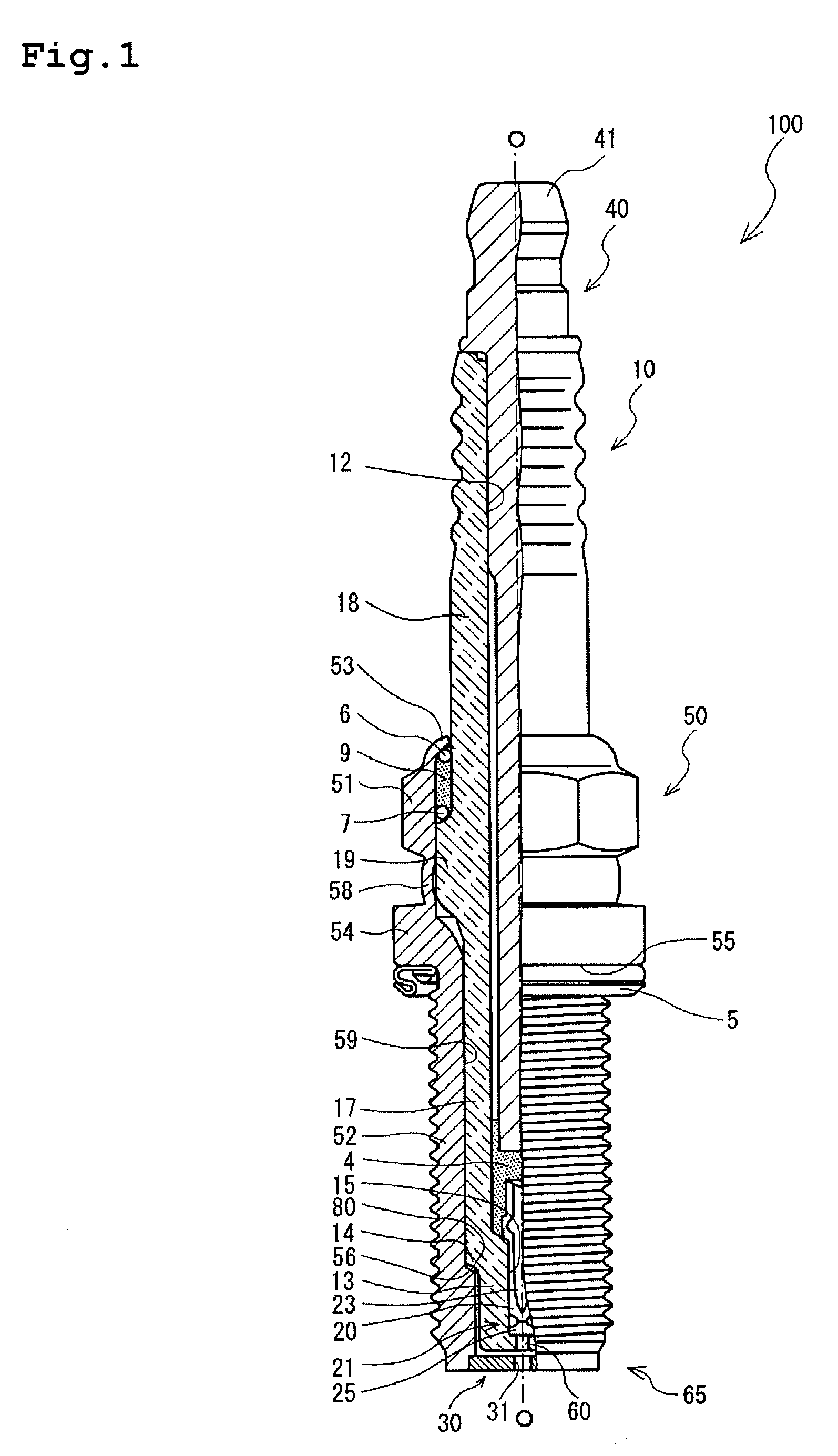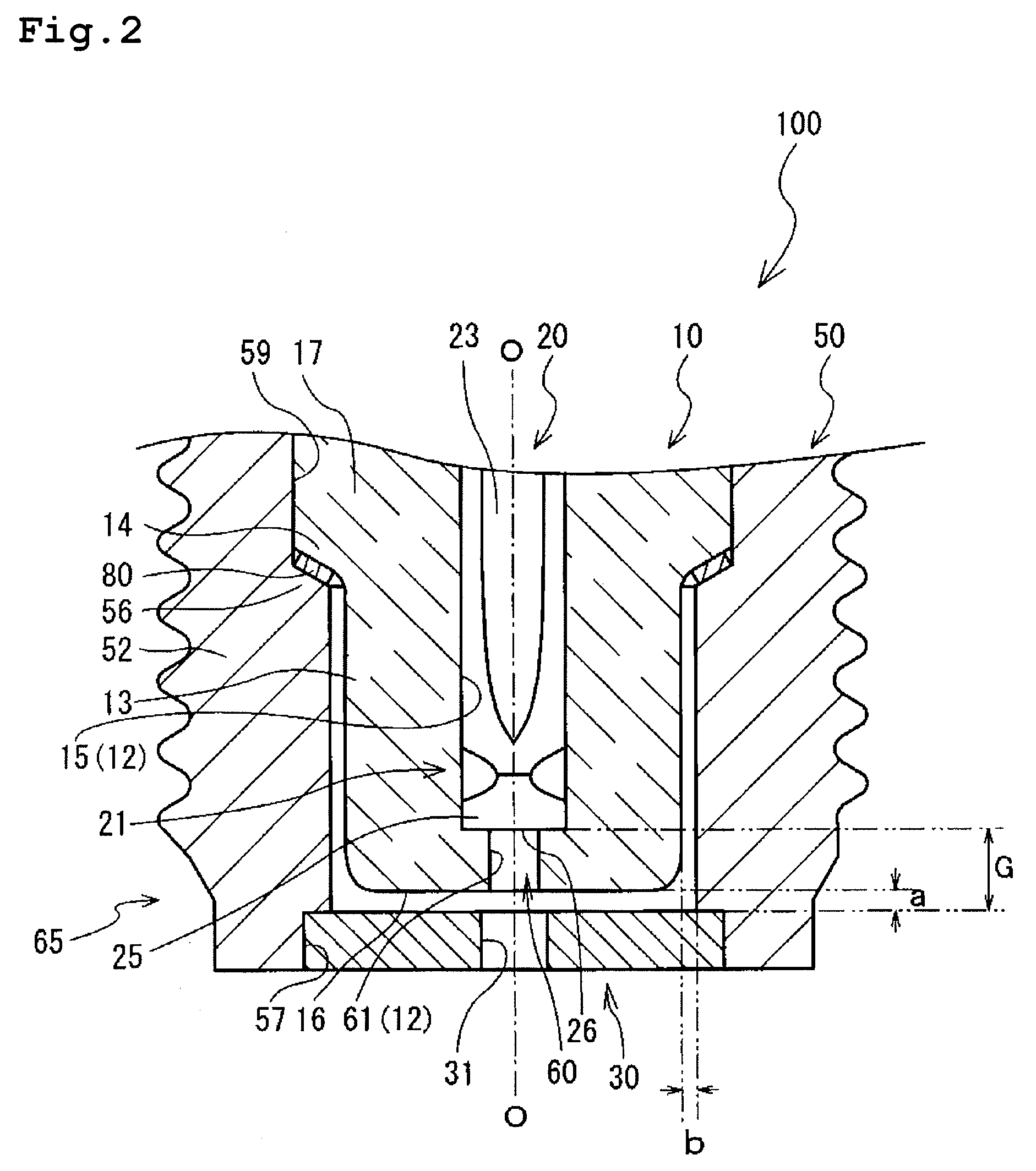Plasma-jet spark plug
a spark plug and plasma technology, applied in the direction of spark plugs, machines/engines, mechanical equipment, etc., can solve the problems of insulator damage and insulator damag
- Summary
- Abstract
- Description
- Claims
- Application Information
AI Technical Summary
Benefits of technology
Problems solved by technology
Method used
Image
Examples
experiment 1
[0054]First, in order to study a relation between the dimension “a” of the first clearance, the volume S of the cavity 60 and the ignitability, a test was conducted. Several kinds of plasma-jet spark plugs (test samples) were produced. Each test sample had one of four kinds of insulator (each having a different inner diameter D so that the volume S of the cavity was either 5, 10, 15 or 20 mm3) with the first clearance dimension “a” ranging from 0.1 to 0.7 mm. The spark discharge gap dimension G in each sample was 3.0 mm, and the second clearance dimension “b” was 1.0 mm. Further, the first packing was not formed in the first clearance.
[0055]Each sample was mounted on a pressure chamber and subjected to ignitability test, charging the chamber with a mixture of air and C3H8 gas (air-fuel ratio: 22) to a pressure of 0.05 MPa (a gas-charging process). Next, the respective sample was connected to a power supply, which could supply energy of 150 mJ, so as to feed a high voltage thereto. T...
experiment 2
[0057]Next, a test was conducted in order to study a relation between the spark discharge gap dimension G, the second clearance dimension “b” and the ignitability. In this test, a plurality of samples of the plasma-jet spark plug was produced. Each sample had an insulator in which the long leg portion was formed such that the second clearance dimension “b” was either 0.5, 1.0, 1.1 or 1.5 mm. The spark discharge gap dimension G was within the range from 1.0 to 4.0 mm. Each sample had the first clearance dimension “a” of 0.5 mm. The spark discharge gap dimension G was adjusted by changing the depth of the cavity. At this time, the inner diameter D of each sample was determined and adjusted so that the volume S of the cavity was kept constant at 10 mm3 to compensate for the changes of the depth of the cavity. That is, this test was conducted using the limit value confirmed in Experiment 1, which obtained an ignitability of 100%. Further, similar to Experiment 1, the first packing was n...
experiment 3
[0061]Next, a test was conducted to confirm whether there is any improvement in the ignitability of the plasma-jet spark plug having the first packing in the first clearance thereof. In this test, a plurality of plasma-jet spark plugs was produced in which one of two kinds of insulator (one with the first packing placed in the first clearance, and the other without any first packing) was employed. The first clearance dimension “a” fell within the range from 0.3 to 0.9 mm. Each sample had the second clearance dimension “b” of 1.0 mm. The depth of the cavity of each sample was adjusted so that the spark discharge gap dimension G was set to 3.0 mm irrelevant of the first clearance dimension “a”. Further, the inner diameter D of each sample was determined and adjusted so that the volume S of the cavity was kept at 10 mm3. That is, this test was conducted using the limit value confirmed in Experiments 1 and 2, which obtained the ignitability of 100%.
[0062]Similar to Experiments 1 and 2, ...
PUM
 Login to View More
Login to View More Abstract
Description
Claims
Application Information
 Login to View More
Login to View More - R&D
- Intellectual Property
- Life Sciences
- Materials
- Tech Scout
- Unparalleled Data Quality
- Higher Quality Content
- 60% Fewer Hallucinations
Browse by: Latest US Patents, China's latest patents, Technical Efficacy Thesaurus, Application Domain, Technology Topic, Popular Technical Reports.
© 2025 PatSnap. All rights reserved.Legal|Privacy policy|Modern Slavery Act Transparency Statement|Sitemap|About US| Contact US: help@patsnap.com



